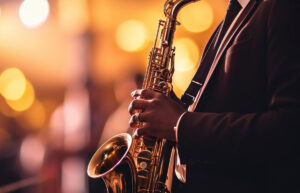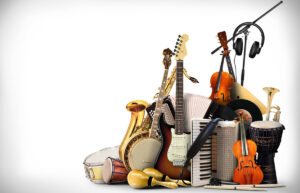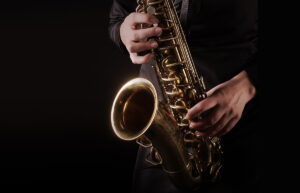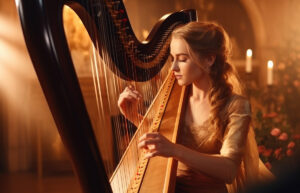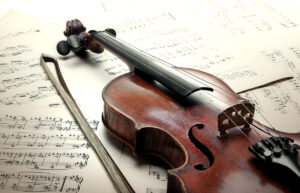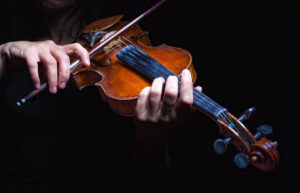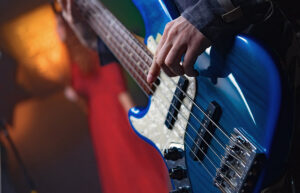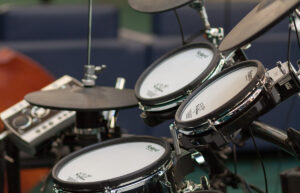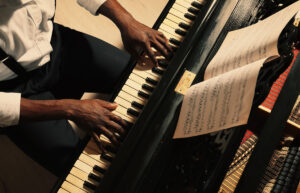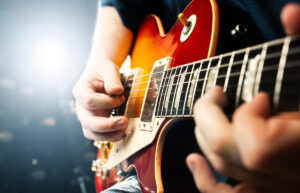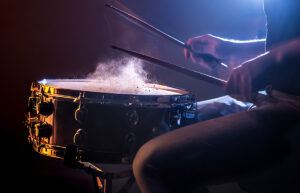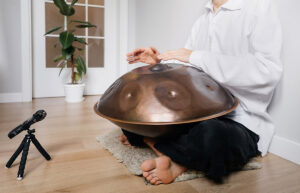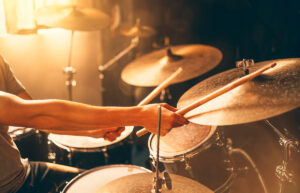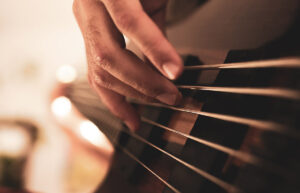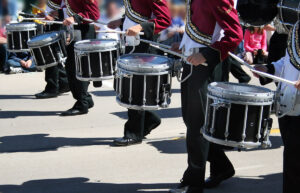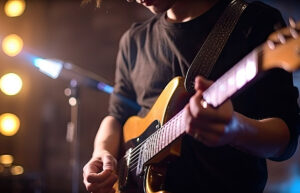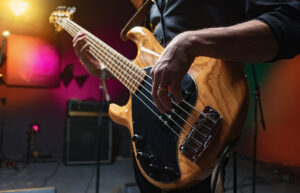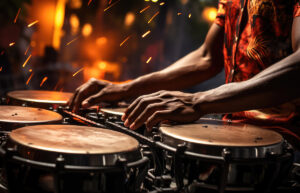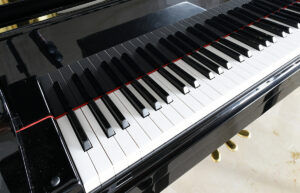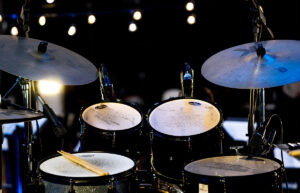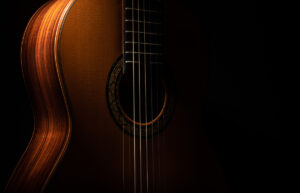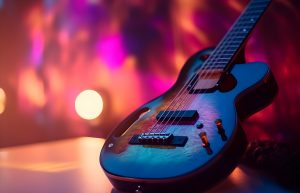Types of African Drums: A Beginner’s Friendly Guide
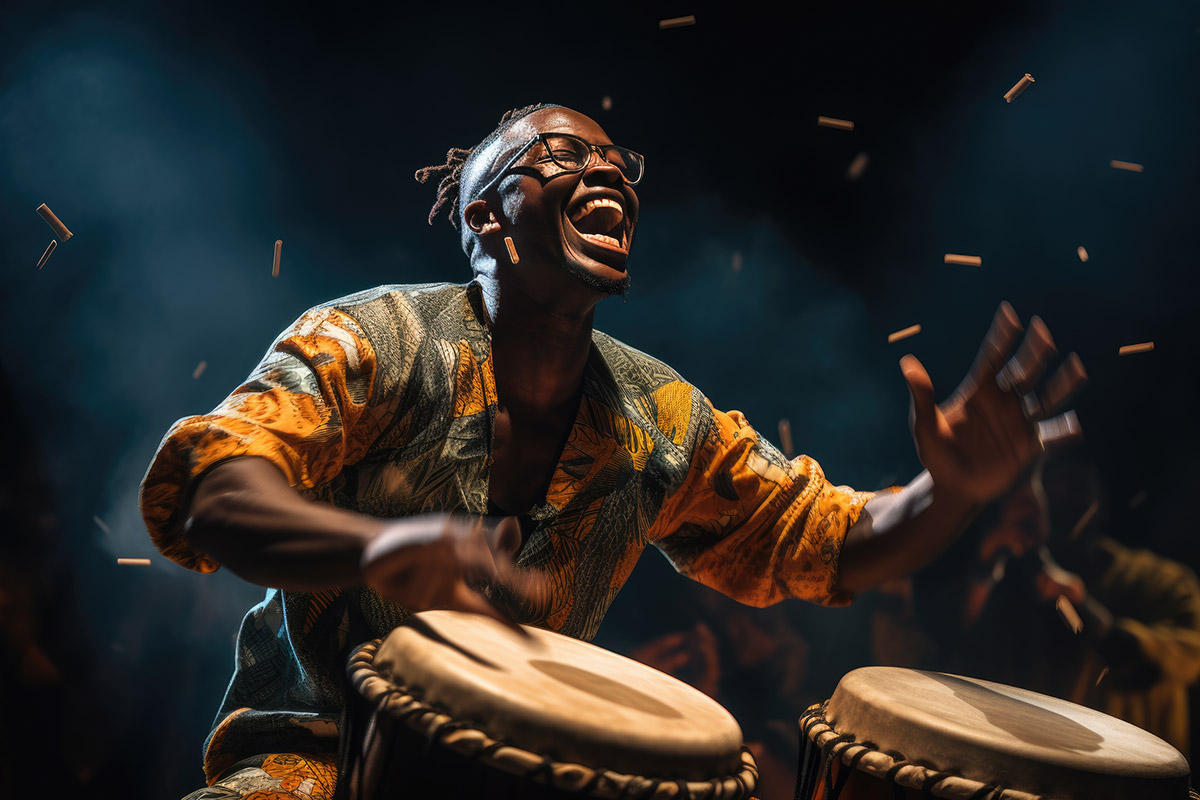
Welcome to our thorough guide on “Types of African Drums.” We’ve compiled all the famous and most loved African drums for you to have a good read. Whether you’re curious about drums or just interested in percussion instruments, this guide will provide exciting facts and all the information you need about African drums.
Welcome to TheDemoStop, now join the community!
Connect with artists, fans and producers around the world.
African drums
African drums encompass a wide range of percussion instruments found across the diverse cultures of the African continent. They vary in size, shape, materials, and playing techniques, producing unique sounds and rhythms. From Djembe to Talking drums, these instruments serve various purposes, including communication, ceremonial rituals, storytelling, and entertainment. They are often handcrafted and hold significant cultural and spiritual significance within African societies.
Types of African drums
Djembe

The goblet-shaped body of the adaptable West African drum, known as the Djembe, is typically carved from a single piece of hardwood and topped with a goatskin head. Its unique deep bass tones and crisp slaps result from its shape, which has a broad bottom and a narrow top.
The Djembe is a traditional hand drum that generates a wide range of sounds by striking different parts of the drumhead, from deep bass notes to high-pitched tones. Expert players can produce intricate melodies and rhythms, elevating the Djembe to a focal point for rituals, social events, and musical presentations.
The Djembe has cultural significance beyond music; it is frequently utilized in storytelling, healing rituals, and social gatherings. Its popularity has spread outside of Africa, since it is now a respected and well-known African percussion instrument in many different musical genres across the globe.
Talking Drum

The legendary West African percussion instrument known as the Talking drum is renowned for its capacity to replicate the tonal patterns of spoken language. This hourglass-shaped drum can be adjusted in pitch by tightening or loosening the two drumheads, which are attached by leather straps or cords.
To produce different pitches, players adjust the tension of the cords by striking the drumheads with their palms or a curved stick while holding the drum beneath their arms. The drum may mimic the intonation and rhythm of spoken language by altering the tension and hitting method to produce a broad spectrum of tones.
The talking drum was a long-standing tool for long-distance communication in many West African societies. Its messages could tell tales, deliver complicated information, and even imitate regional dialects. Its rich history and significance in African culture are being preserved now as it continues to be an essential component of ceremonies, cultural events, and musical compositions.
Bata

The Yoruba people of Nigeria are the originators of the double-headed, hourglass-shaped Bata drums. These drums are available in various sizes, and each has a designated name and purpose within the group. Usually carved from hardwood, they have two drumheads kept in place by metal rings or tension ropes, which can be composed of synthetic materials or animal skin.
The Bata drums are reversed in Yoruba tradition and are frequently used in religious occasions, especially while worshiping the Orishas. Every drum in the group has a specific function: the “Iya Ilu” (mother drum) creates the deepest tones and provides the framework, whereas the “Itotele” (middle drum) and “Okonkolo” (baby drum) provide more support and improvisation.
The Yoruba culture’s complex language and musicality are reflected in the complex rhythms and melodies that are produced by the famed Bata drums. Different drumming patterns and styles are used for musical performances, religious rites, or cultural events. Due to their preservation and incorporation into various musical genres, Bata drums are also a crucial component of Afro-Cuban music in Cuba.
Bougarabou

The Mandinka and Djola ethnic groups of Guinea, Senegal, and the Gambia tribe are the originators of the Bougarabou, a traditional West African drum. It has a tall, extended body built of a single piece of wood and a large drumhead that is often fastened with metal rings or rope tuning systems made of goat or cow leather.
Distinctive for its deep, resonant sound, the Bougarabou produces a rich range of tones when struck with bare hands or sticks. Its versatile tonal capabilities enable players to create intricate rhythms and melodies. The drumming patterns often embody cultural expressions, storytelling, and dance rhythms within African traditions.
Traditionally, the Bougarabou played a significant role in various ceremonies, social gatherings, and rites of passage, symbolizing community unity and cultural heritage. Over time, its rhythmic versatility and unique sound have captured the interest of musicians globally, making it a valued instrument in world music, fusion genres, and percussion ensembles.
Ngoma

The term “Ngoma” is a Swahili word that generally refers to various types of drums found in different regions of East and Central Africa. Ngoma drums come in diverse shapes, sizes, and materials, reflecting the cultural diversity of the communities where they are used.
African societies use the Ngoma drums for various activities, including social gatherings, storytelling, healing rites, and ceremonial ceremonies. They are essential to maintaining the oral traditions and histories of numerous African ethnic groups and frequently have great cultural significance.
Due to the broad use of the term “Ngoma” across different African cultures, the specific characteristics, playing techniques, and cultural contexts associated with these drums can vary significantly from one community to another. The Ngoma drums collectively represent the rich and diverse drumming traditions present in East and Central Africa.
Welcome to TheDemoStop, now join the community!
Connect with artists, fans and producers around the world.
Udu Drum

The Udu drum is a distinctive percussion instrument from Nigeria among the Igbo people. It is a clay pot drum characterized by its hollowed body with a small circular hole at the top and one or more holes on the side.
The Udu drum generates sound by hitting the surface and resonating in the air. To produce a variety of tones and pitches, musicians usually hit different portions of the drum’s body, resulting in sounds ranging from deep bass to resonant, percussive notes.
Originally used in traditional ceremonies and rituals, the Udu drum has found its way into contemporary music, becoming popular in various genres, including world music and fusion styles. Its unique tonal qualities and versatility of sounds make it a valued addition to percussion ensembles and musical compositions worldwide.
Bowl Drum

“Bowl Drum” isn’t a specific African drum classification but might refer to drums made from bowls or similar hollowed-out objects that produce sound when struck. In some instances, these makeshift drums can be found in various cultures across Africa, created by stretching a membrane over a bowl-shaped object, such as a large wooden or metal bowl, to generate sound.
They might be used in certain ceremonial, cultural, or rhythmic practices within specific African communities. Still, they don’t represent a standardized or widely recognized drum type compared to other traditional drums like the Djembe, Talking drum, or Bata drums.
The concept of using a bowl-shaped object as a drum resonates with the innovative spirit of creating music from everyday materials, a practice found in cultures worldwide.
Ewe Drum

The Ewe drums are a collection of percussion instruments originating from the Ewe people of Ghana, Togo, and Benin in West Africa. These drums encompass various types, each with its own shape, size, and unique tonal characteristics.
One of the prominent drums within the Ewe ensemble is the “Atsimevu,” a large barrel-shaped drum played with sticks. It serves as the lead drum, setting the tempo and providing a foundation for the ensemble’s rhythms. The “Sogo” and “Kidi” drums, smaller in size, accompany the Atsimevu, each with distinct roles and pitches, contributing to complex polyrhythms.
The Ewe drums are integral to the cultural and musical traditions of the Ewe people. They are crucial in various social and religious ceremonies, cultural events, and musical performances. These drums are renowned for their intricate rhythms, syncopated patterns, and the cultural richness they bring to Ewe music and dance, both within their local communities and in global music scenes.
Conclusion
The diverse array of African drums represents a vibrant tapestry of cultural heritage and musical expression.
From the iconic Djembe of West Africa to the melodic Talking drums, the sacred Bata drums, the resonant Bougarabou, the versatile Ngoma, the earthy Udu drum, and the rhythmic Ewe drums, each type carries centuries of tradition, storytelling, and communal significance within the respective African societies.
The African drums mentioned above serve as instruments for music-making and embody the spirit, history, and unity of diverse African cultures. Their global influence continues to resonate, enriching the music world while preserving the profound legacy of African rhythmic tradition.
FAQs
What is an African drum?
An African drum is a percussion instrument made of wood, clay, or animal skins. It comes in various types like the Djembe, Talking drum, Bata, etc., each with distinct sounds and cultural importance. Used for communication, ceremonies, and music, they represent Africa’s rich heritage and diverse rhythms.
What are the different types of African drums?
- Djembe
- Talking Drum
- Bata
- Bougarabou
- Ngoma
- Udu Drum
- Bowl Drum
- Ewe Drum
What is the most common drum used in Africa?
The Djembe is one of the most commonly used drums in Africa. Its versatile sounds, rich tones, and adaptability to various musical styles have contributed to its relevance and recognition as a prominent African drum.
What are small African drums called?
Small African drums are often referred to as “talking drums”. These drums, such as the “dundun” or “tama”, are known for their hourglass or tapered shapes and the ability to alter pitch and mimic tones of human speech by tightening or loosening their strings or drumheads.
What is the oldest African drum?
Crafted in Ghana during the 1700s, the Akan Drum is one of the most ancient African artifacts preserved in the British Museum.
What is the best African drum?
The best African drum is subjective and depends on personal preference, cultural context and intended use. However, the djembe is widely recognized and celebrated for its versatility, rich sound and popularity across Africa.
What is the loudest African drum?
The Djembe is known for being one of the loudest African drums due to its construction, particularly its large size, goblet-shaped body, and the use of goat or cow skin heads.
What are the African drums made of?
African drums are made of wood for the body and animal skins (like goat or cowhide) for the drumheads, creating distinct sounds and features for each drum type.


